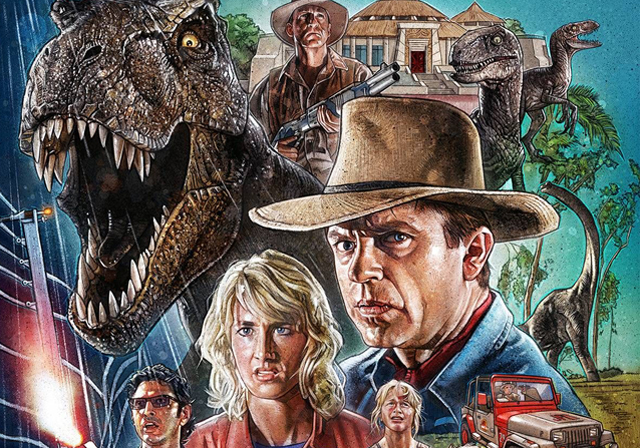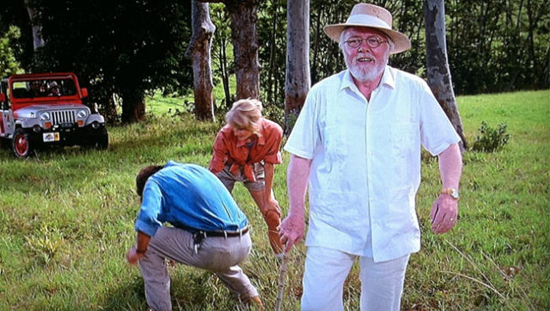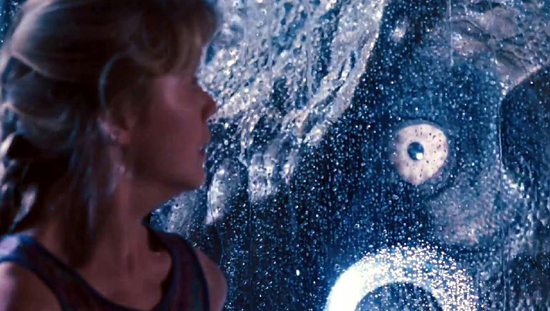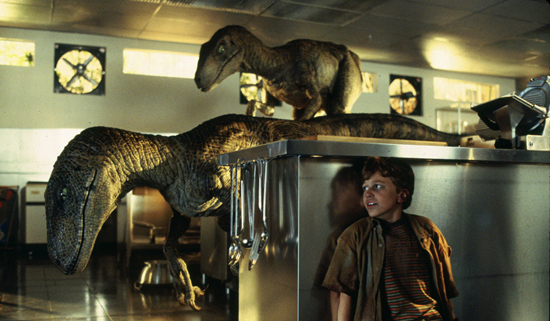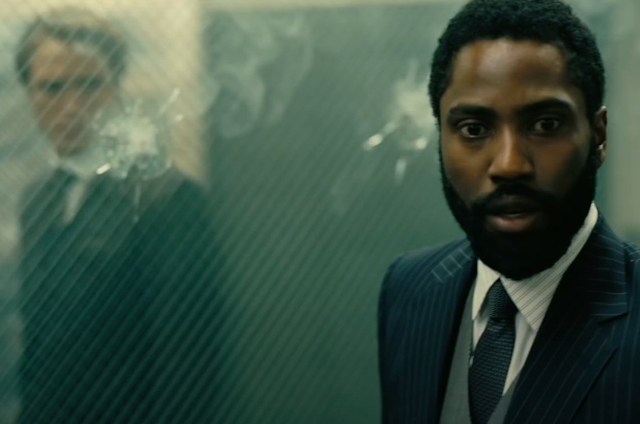
When we watch the movies, the illusion of reality is meant to remain as invisible as possible. Every filmmaker’s job is to absorb the audience into a world and make them forget what they are watching is make-believe. That’s why so much importance is put into making sure that everything that is captured through the lens of a movie camera doesn’t betray the artifice that is behind it. But what goes into making everything on camera look as close to perfect as possible involves a lot of hard work behind the scenes from multiple departments, from costuming to set design to prop-making, not to mention all the pre-production work needed to determine how a shot will look in the first place. As a result, before the making of every movie, there is a great amount of writing, drafting, and crafting that needs to be accomplished. And once the cameras have rolled and the many different materials built for every production have served their purpose, the filmmakers and production companies are left with a lot of artifacts of their collaborative efforts. In the old days of Hollywood, very little regard was given to all the different props, costuming and paperwork needed to make each film; they just took up space and were discarded to make way for the next round of production material. But later on, special movies gave rise to the desire to preserve materials with sentimental value to the film community; think Dorothy’s Ruby Slippers or the sled from Citizen Kane (1941). After Hollywood’s golden age, there came a much more concerted effort to preserve these relics of the past as a way of preserving the history of the industry itself. Thus began a move to create archives at all the major studios in Hollywood, with the intent to curate all the artifacts of past classic films that they could find, but also to give each studio a place to have all the same materials readily available for future filmmakers and historians to have access to for the purpose of research.
One of the first studios to undertake such a project was the Walt Disney Studios in Burbank. In 1970, a young librarian from UCLA named Dave Smith was given access by the Disney Studios to look through some of their archived material that had been gathering space in a dark secluded part of the Studio lot that was dubbed by many as “the crypt.” Dismayed by the haphazard conditions that all the priceless archive material was being stored in, Smith wrote a proposal to the Disney Studios offering up his plan for a permanent and safely secure archive to house all of Disney’s many artifacts from it’s extensive history in entertainment. The Disney Company agreed with Dave’s proposal and hired him on as the first head of their newly created Archive department. From that point on, Dave Smith and the Disney Archive team procured a vast collection of art, props, costumes, and merchandise that spans across all the nearly 100 years of the Walt Disney Company. Before Dave Smith’s passing in 2019, he oversaw his archive project grow from a little side office on the Burbank Lot to a vast, multi-facility operation where you can find just about anything related to any Disney project preserved for all time. Of course, once you’ve collected all of these amazing artifacts over the years, you want to also show them off to fans from across the world. Many Disney artifacts have made it into various galleries and special displays temporarily all over the world. But to celebrate the special 50th anniversary of the founding of the Disney archive, a special exhibition has been set up for the Bowers Museum in Santa Ana, California; just a short drive away from Disneyland itself in Anaheim. In this special exhibition, people will not only get a chance to have an up close encounter with many amazing artifacts from the Walt Disney Archives, but they will also have the chance to learn the story of the Archive’s creation and how it is set up and operates today.



Settled not far from the center of Downtown Santa Ana, the Bowers Museum is a modest but still exquisite gallery of Californian artwork and world culture artifacts. The museum planned on holding the Disney Archives exhibition from March to August of this year. However, due to significant periods of shutdown during the COVID-19 pandemic, the museum has ended up extending the Disney Archives exhibit into early 2021. In order to remain open after getting the go ahead for operations again, the Bowers Museum strictly enforces mask wearing at all times in the galleries, and conducts temperature checks at the front door. Upon entering the museum, guests are greeted by a sculpture of Dumbo the Flying Elephant, suspended from the ceiling. After walking underneath Dumbo flying above you, we arrive at the entrance to the gallery itself. On the first wall, we see the famous photograph of a young Walt Disney with the shadow of Mickey Mouse cast on the wall next to him. Alongside it is a greeting from the Disney archivists that put on this special exhibit, giving us an introduction to what we are about to see in the halls that follow. The first room around the corner focuses on the two men most responsible for the archive’s existence: Walt Disney himself, and archive founder Dave Smith. The first of many eye-catching displays once you enter this room is a recreation of Walt Disney’s private office. It is noted that the entire display is a facsimile and contains nothing from the real thing, but for someone that has been in the actual office from a tour I took of the Studio Lot a few years back, I can say that it is a pretty good representation. The display itself does have an interesting history of it’s own. The desk and assorted knick knacks were actually props used for the movie Saving Mr. Banks (2013), where they were used to recreate Walt’s office for the movie. So, sure Walt Disney never sat behind this desk, but actor Tom Hanks certainly has.


On the opposite wall is a recreation of the Disney Archive entrance, which in itself is a bit of a mini-museum with it’s own rotating display of artifacts that it often houses there on the Studio Lot. On this recreation, actual artifacts important to Disney history are found, specifically ones related to the creation of nearby Disneyland. In the case display is housed the survey equipment that was used to measure the terrain of what would become Disneyland, including the surveyor box itself, markers and the earliest known layout map of the park. In the case as well is a recreation of the first ever conceptual map of Disneyland that Walt commissioned artist Herb Ryman to draw up, which he was then going to show to potential investors in order to gain the funding for his dream park. It’s a nice simple way to introduce the idea of what the archives were meant to protect with regards to displaying the larger Disney story. On the wall opposite, the exhibit honors the late Dave Smith, spotlighting the impact that he had on saving and preserving all the things that we are about to see in the gallery, as well as all the things still kept guarded back at the Archives itself. In the proceeding rooms, the gallery breaks things into the different kinds of spaces that one would encounter upon entering the Archives. In a nice little touch, the gallery also tries to recreate much of what the different parts of the archive might actually look like if you were to visit it yourself.


The first room we enter is what’s known as the “Reading Room.” This Reading Room is the only part of the archive that was open to us on the Studio Lot tour, and for the most part, it is also the only part of the archive that is open to non-archivists on the Studio Lot as well. It is mainly the area where many people from Disney come to conduct research, much like the reading rooms of your local library. The Archivists retrieve the materials that the researcher is requesting from the back rooms and bring it out to the reading room for them to examine hands on, with the strict guidelines that it not leave the room itself. In this gallery recreation, we are greeted by a cut-out image of Walt Disney waving to us to enter. Across from him is one of the first big displays of an actual artifact from the studio lot itself. On an elevated platform is one of the animators desks that was used in the Animation department at the studio. Though it doesn’t indicate whose desk it actually belonged to, the display does give us a good representation of the animator’s workspace; which used to be the core of the company itself. On the walls around the desk are various conceptual artwork that was made for the movie Fantasia (1940). Some of the art are facsimiles, but there was also one or two original pieces there on display as well. Past this first section of the reading room, we arrive at the heart of the “Reading Room”. In a subtle recreation of the actual room itself, the opposite wall drapes banners that make the space more like a library. A reading table like the one found at the actual archive, gives us a sense of how different material is examined within the room. Most of the artifacts found here are important pieces of paperwork preserved by the studio, including meeting dictations, notes, correspondence, special marketing material, and assorted sketch drawings.



Included in the displays here are some of the most important documents in Disney history. One of the most remarkable artifacts is the very first contracts ever signed by Walt Disney himself, this one in regards to gaining a permit to film for one of his historic Alice shorts, year before Mickey Mouse. This contract marks the beginning of Disney Studios as an operating company, so you could say that the Walt Disney Studios began the moment this piece of paper was officially signed by Walt himself. The fact that it was found at all and survives to this day almost a hundred years later is a great testament to the dedication of the archivists, and to Walt Disney himself for never throwing anything that important away. Other incredible finds here that may go unnoticed are interesting artifacts like Walt Disney’s original passport, dating back to 1917. There’s also Disneyland ticket #1, the first one ever sold, bought by Walt’s brother Roy for a dollar, as well as the Western Union correspondence that Walt sent to his brother after loosing his contract with Universal which then led to the creation of Mickey Mouse soon after. Walt’s own personal effects like reading glasses and a pen, as well as a business card from Roy Disney round out the other interesting artifacts here. On the walls are also the official portraits of Mickey Mouse that are always commissioned from artists at the studio for special anniversary years. In another case is found an artifact that had a special connection for Walt, but for many years was considered lost until recently found in the archives; the snow globe from Mary Poppins (1964), which itself once sat in Walt’s private office for many years.

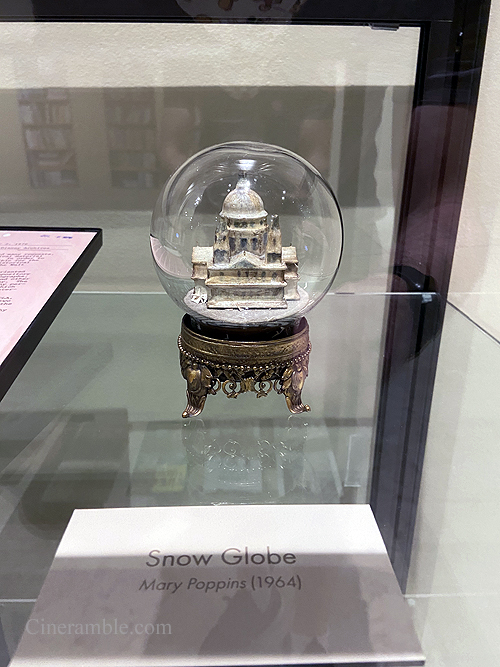
Moving on, we arrive in the next room, which is called the “Back Room.” This is the room that only the archivists are allowed to enter and collect artifacts from. Gathered throughout this area is a nice collection of what might be held at any given time at the on Studio Lot archive building, which runs the gamut of pretty much everything from the studio’s long history. The first thing that greets us at the beginning of this section is the display case that really is like a hall of fame of noteworthy Disney props from it’s early years. In there, you’ll see the coonskin hat worn by Fess Parker in Davy Crockett (1954), the sword used by Guy Williams in the TV series Zorro, the magical ring from The Shaggy Dog (1959), the bedknob from Bedknobs and Broomsticks (1971), as well as two artifacts from Mary Poppins, the stack of blocks that spell out her name, and Mary’s famous carpet bag. This display is certainly one of the more popular in the gallery, just because of the iconic items that are held inside. Apart from this, you see displays of many different types of artifacts that the archives hold. This includes early Disney merchandise, like the original Mickey Mouse dolls; animation cels from different movies and series, posters used by the studio in it’s advertisement; matte paintings used by the effects department on several different live action films; an animatronic prototype of Abraham Lincoln’s head used for his likeness in the Disney Parks’ attraction; several character maquettes used for animator reference; and so on. Probably the artifacts that caught my eye the most were the actual story books used in the movies Snow White and the Seven Dwarves (1937), Cinderella (1950), and Sleeping Beauty (1959). These were the physical books that you see open up at the start of each film, and it’s nice to see them here up close and looking good so many years later. Knowing the importance of those movies to the history of the company, it’s great to see that the only physical props used in their filming are still kept preserved with great care.



Moving out of the “Back Room” section, we enter what is by far the largest portion of the exhibit, which is the “Dimensional Collections” section of the gallery. This Dimensional Collection section is representative of the many storage facilities that house the Disney Archives’ vast collection. Mainly it’s the stuff that the limited space at the Studio Lot archive can’t find room for. And it spans a vast amount of interesting artifacts that range from everything from costuming, to props, to disused theme park attraction artifacts, to even movie used vehicles. The first thing that greets you into this part of the gallery is a disused window display from the Main Street Emporium at Disneyland, this one showing the evil Queen from Snow White. It’s the first physical Disney Park artifact found so far in the gallery, but certainly not the last. Just beside it are three figures from past attractions across the many Disney parks, including a Xenomorph animatronic from the old Great Movie Ride at the Disney Studios Park in Orlando, Florida, a Mayan chief figure from the El Rio del Tiempo ride in Epcot, and the old robot pilot from the Star Tours attraction at Disneyland. Across from that are tombstones from the Haunted Mansion, as well as discontinued Hitch-hiking Ghost animatronics. And displayed across an entire wall is a collection of costumes from across the whole Disney Studio history. These include Warren Beatty’s yellow coat from Dick Tracy (1990), Glenn Close’s Cruella De Vil dress from 101 Dalmatians (1996), Emilio Estevez’s team jacket from The Mighty Ducks (1992), as well as the flight uniform from The Rocketeer (1992). Disney subsidiaries, past and present, like Touchstone and Miramax pictures are also represented here, as Julia Roberts’ dress from Pretty Woman (1990) and Dame Judi Dench’s elaborate Elizabeth I costume from Shakespeare in Love (1998) are also found. In this area, you also get the first representation of the newest addition to the Disney family, 20th Century Fox, as some of their artifacts have found their way into the Disney Archive. The first piece shown in this area is the fish man prosthetic makeup that was worn by actor Doug Jones for the movie The Shape of Water (2017), a Fox Searchlight film.



Past the costumes we find a section devoted to movie props both large and small. Among them includes a life size model of Roger Rabbit that was used as a stand in on set to help give the crew and actors an indication of how to stage the scene for a character who would be drawn in later. There’s also another famous iconic prop delivered from the Fox Archives found here, which is Wilson from the movie Cast Away (2000), looking just as tattered and weathered as it did in the film. Another display also features a collection of on set puppets, including one of Winnie the Pooh from the recent film Christopher Robin (2018), a couple of hand puppets from the Bill Murray comedy What About Bob? (1991), and some stop motion puppets from the Wes Anderson animated film, Isle of Dogs (2018). Right next to that is one of the more striking large props found so far, and one that is iconic to my generation, and that’s the shrinking machine from the Rick Moranis action comedy Honey, I Shrunk the Kids (1989). The prop itself has seen better days, but the archives have done a recent restoration helping to bring it back to as close to it’s original state as they could. Having grown up with the movie since my childhood, it was pretty neat seeing this prop up close and catching all the details that I never noticed before. Adjoining this prop section of the gallery, the Dimensional Collections section moves into an area focusing on some of the newest additions to the archive collection, which displays various things like Angelina Jolie’s Maleficent costume, to costumes from the recent film Mary Poppins Returns (2018), to the sword used in the recent Mulan (2020) remake, which was forced to debut on Disney+ due to the pandemic closing most theaters in America. In this area, the gallery states the continued interest that Archives has in preserving all the things that are going to be coming in the near future form the studio, including from all the projects on Disney+.


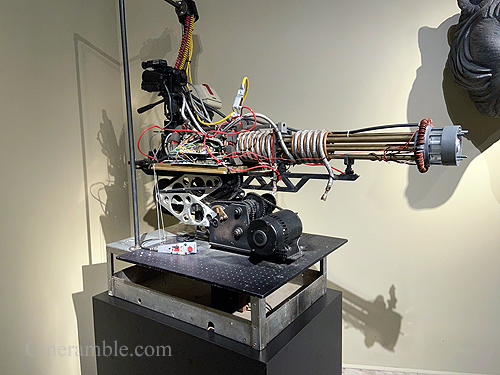
The final major part of the gallery belongs to the Disney Vehicle section. Here, we find the actual full scale vehicles that have been used by Disney at various points. Dating back to Walt Disney’s time, there is the Model T Ford used by Fred McMurray in the film The Absent Minded Professor (1961), still preserved in a pretty good state, though highly doubtful that it flies through the power of flubber like in the original film. Next to that is a piano on wheels, which had been used outside the Golden Horseshoe at Disneyland to entertain guests. A very talented performer basically plays on the piano on wheels as they pedal it forward throughout the park. Next to this is probably the one vehicle that every guest will recognize right away, and that’s Herbie the Love Bug. This particular model of Herbie was used for the more recent Herbie: Fully Loaded reboot from 2005, starring Lindsay Lohan and Michael Keaton. Though it’s not the original from the 1968 film, it’s still nice to see this iconic Disney vehicle represented here, and it almost certainly is going to be one of the most photographed artifacts in the gallery as a whole. Not far away, and right next to the final room, is a vehicle from the Fox collection. It’s the race car used in last year’s Ford v Ferrari (2019), starring Matt Damon and Christian Bale. In addition, the racing outfit worn by Bale in the film is displayed right next to it. On the wall nearby, it displays a statement about the Archive’s commitment to work just as hard with the Fox archivists towards preserving all the treasures from this likewise legendary studio with it’s own share of amazing artifacts collected throughout the years. No doubt the archivists at Disney are dedicated to making sure the past is not lost over time, and with the company growing even bigger now with Fox on board, their amazing task has become even more monumental.



To conclude the exhibit, a recreation of Disney Legends Plaza is displayed for guests to walk around. The Legends Plaza is the one in front of the main corporate HQ building, famous for it’s colonnade roof that is supported by stone figures of the Seven Dwarves. Along the plaza are pillars that hold plaques dedicated to the many Disney Legends that have been inducted and honored over the years. Celebrated at special ceremonies over the last 25 years, most recently held at the D23 Expos, each legend is given a special statue and are given the chance of immortalizing their handprints in cement, unless the honor is given posthumously. It’s a great way to honor the legacy of all those who have made the Disney Company what it is today, and sadly most of the general public never gets to see it, unless they are invited to the studio itself. I have thankfully gotten my chance to see it during my tour of the studio years back. Just going through all the names on pillars reveals an incredible look at all the amazing people who have contributed to Disney’s legacy, including noteworthy figures like Stan Lee and George Lucas who became a part of the Disney family much later on. In this gallery, the plagues are just wooden recreations of the actual ones you would see at the Legends Plaza, but it does give you a good sense of who you would find honored there. Some of them are names may not jump out to you right away, like those of the animators who worked at the studio, but others like Julie Andrews, Robin Williams, and Betty White almost certainly will. At the very end of the exit, a banner with the entire Archive team pictured is found, alongside a thank you message for those who walked through the gallery. A fine curtain call for a very pleasing exhibition.



For any Disney fan out there, visiting this exhibit is a no brainer. You’ll get a very up close look at some of the most amazing artifacts found in Disney’s vast archive, including a few that rarely make it out into public view. What I liked about this exhibit in particular is that it really gives you the sense of the history of the archive itself, the way it operates, and why it is so important to maintain. When Dave Smith sent his proposal to Disney 50 years ago, he knew how important it was to preserve the past treasures of the Walt Disney company, and that it would be a monumental undertaking. In the 50 decades since, the Disney archives now safely houses pieces of history spanning all the way back to the days when Walt Disney was just a young kid with a dream. Walking through the exhibit only gives us a small sampling of the Archives’ true scale and scope, but what is found here is certainly enough to excite any Disney or movie fan in general. I especially like the way they focused on the vast expanse of the Disney company as well, not just the animated films at it’s core. There’s stuff from the live action films, the theme parks, and personal effects related to the man himself on display here. A lot of it is also surprising finds that I don’t think would normally would make it out to exhibits like this. Every corner does an amazing job to give you a sense of the importance of the Disney Archive’s existence, and it just reinforces why archives are such an essential part of the film industry in general. If you are in the Southern California region and are a die hard movie and/or Disney fan, I strongly recommend checking this exhibit out. Thankfully it’s been extended a few months, so you have until February to see it, barring another pandemic shutdown. And also take in the rest of the Bowers Museum collection as well, which is quite interesting on it’s own. It’s where art and history collide, and I couldn’t think of a better setting for Disney to celebrate it’s Archive’s 50th year.



